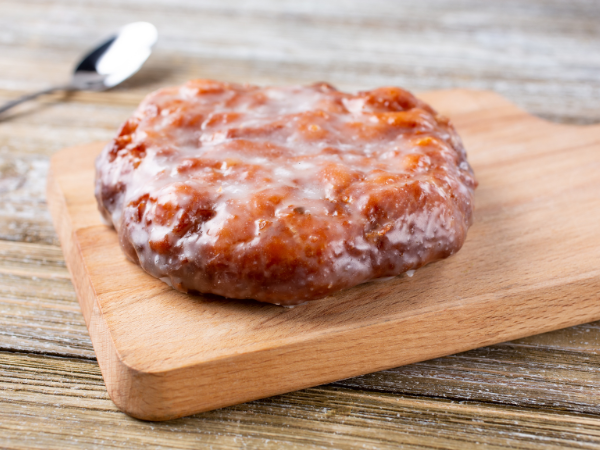Apple fritters can be a delicious treat, but they can also be calorie-dense and high in sugar. Here’s a general nutritional breakdown for a standard apple fritter (approximately 100g):
| Calories: 280-350 kcal | Sodium: 200-300mg |
| Total Fat: 12-18g | Total Carbohydrates: 40-50g |
| Saturated Fat: 2-4g | Dietary Fiber: 1-2g |
| Trans Fat: 0g | Sugars: 18-25g |
| Cholesterol: 15-30mg | Protein: 3-5g |
Keep in mind that the exact nutritional content can vary based on the specific recipe, size, and ingredients used in making the fritters. If you’re buying from a bakery, the values could differ as well.
Apple Fritter: Micronutrient Content
The micronutrient content in apple fritters is generally low because these treats are primarily composed of refined flour, sugar, and oil. However, there are some micronutrients present:
- Vitamin C: From the apples, though it is often minimal after cooking.
- Calcium: Small amounts, especially if milk is used in the batter.
- Iron: From the flour, but typically not a significant source.
- Potassium: Present in apples, but levels may vary.
- Vitamin A: If eggs or butter are used, they may contribute small amounts of Vitamin A.
Variations in Apple Fritters
The nutritional content of apple fritters can vary widely depending on the recipe and preparation method:
- Baked vs. Fried: Baked apple fritters will generally have less fat and fewer calories compared to the fried version.
- Whole Wheat vs. Refined Flour: Using whole wheat flour increases the fiber and micronutrient content, such as iron, magnesium, and B vitamins.
- Reduced Sugar: Lowering the sugar content or using natural sweeteners like honey or maple syrup can reduce the overall calorie count.
- Gluten-Free: Using gluten-free flour blends can cater to specific dietary needs without significantly altering the nutritional content.
Key Points to Consider
- High Caloric Density: Apple fritters are typically calorie-dense due to their sugar and fat content.
- Low Micronutrient Density: They are not a significant source of vitamins or minerals, especially compared to whole foods.
- Potential for Fortification: There’s room to fortify apple fritters with additional nutrients to improve their nutritional profile.
Fortification of Apple Fritters
Fortifying apple fritters can enhance their nutritional value, especially if you’re looking to make them a more balanced treat. Here are some fortification ideas:
- Add Protein Powder: Incorporating a scoop of protein powder into the batter can increase the protein content.
- Fortified Flour: Using flour fortified with iron, folic acid, and other B vitamins can improve the micronutrient profile.
- Incorporate Fruits and Vegetables: Adding grated carrots, zucchini, or even spinach can increase the fiber, vitamins, and minerals.
- Use Nut Flours: Almond or coconut flour can provide additional healthy fats, fiber, and protein.
- Vitamin D Fortification: If using milk or eggs, choose options that are fortified with Vitamin D to enhance bone health.
